Even social brands should lead with WHAT, not just WHY
I suggested in a recent post that the WHAT (creating a brilliant product/service) is just as important as the WHY (mission/purpose) for brands. This post looks at how this approach works even for social enterprises and charities, where the social mission plays a central role.
I draw on examples from the pro-bono consulting work I do with social brands including Harry Specter’s Chocolates, the St Christopher’s charity and Expert Impact, an expert mentoring service for social enterprises.
1. Sausage = product or service
People might say in surveys that they are more likely to buy brands with a positive impact on society. However, the harsh reality is that most of us are unlikely to keep buying or recommend products and services that are sub-standard, no matter how much social good they do.
This is why social brands needs to focus first and foremost on creating a brilliant product or service, one that people want to buy and recommend on its own merits.
Take Harry Specter’s, a lovely little company where I work pro-bono as a Non-Exec Director. They create beautiful handcrafted chocolates that help create employment and training for young people with autism. The social mission is a worthy one and close to the heart of owners Mona and Shaz, whose own son Ash is autistic (he came up with the brand name).
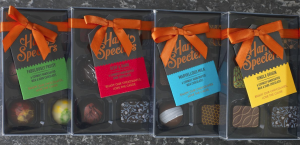
However, the focus is on designing and creating fantastic chocolates that people want to buy for the taste and overall experience. Monah is a magician who creates delicious flavours, uses fresh ingredients in the ganaches and then ensures each chocolate is beautifully decorated. This has helped the brand win 22 taste awards in the last four years.
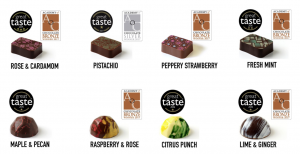
2. Sizzle = emotion and brand personality
In addition to having a great product or service, social brands need to bring to life a distinctive brand personality that creates emotional ‘sizzle’ and helps them stand out. A key challenge here is ‘looking the part’: presenting yourself in a style that makes you look like a top quality, professionally created brand.
Brand personality was a key challenge on a pro-bono project for St Christopher’s, a charity that creates brighter future for children and young people in care, where I am a trustee.
The organisation actually had a great service proposition, with an approach that is truly child-centric, actively involving them in how the charity is run to equip them with life skills. Young people interview new managers, give input to marketing materials and can take up apprenticeships inside the organisation.
However, the personality of the brand was not clearly shining through. Imagery and language tended to be too negative, talking about ‘vulnerable’ young people for example, or too perfect and idealised (see below). In addition, the website didn’t look like a top-notch enterprise and was difficult to navigate.
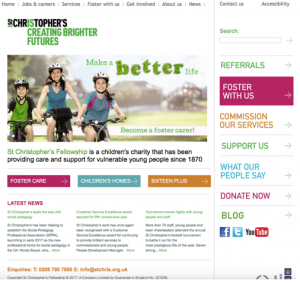
An ‘Is and Isn’t’ exercise helped the team be more precise about the brand personality they wanted to project, and also what was off-brand. The new personality was positive, real-life and confident. This work helped inspire and guide new marketing communication, including more effective recruitment advertising, successful bid proposals, an impact report and a re-designed website (below) which has just gone live with positive initial feedback.
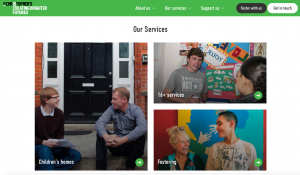
3. Social mission: bake it in
A social mission is of course vitally important for any social brand, and can create a further point of difference to drive purchase and recommendation. The key here is to ‘bake’ the social cause into the product or service. We call this ‘brand social responsibility’ (BSR), in contrast to ‘corporate social responsibility’ (CSR), where a company simply gives a percentage of profit to good causes, but sells a standard product.
At Harry Specter’s the social cause is baked in to the day-to-day operation of the business. Young people with autism are trained to work on making the chocolates, packing them and designing the marketing materials. This is solving a real issue, because 85% of the 700,000 people with autism in the UK are unemployed.
BSR can work for all brands, not just social enterprises. The leading South African retailer Woolworths is committed to helping create opportunities for young people and communities. ‘StyleBySA’ bakes this into the product offer. This is a seasonal campaign linked to SA Fashion Week, where the brand showcases the fashion creations of eight young local designers including Rich Mnisi, Sol-Sol and Young & Lazy. Woolworths is going beyond CSR and writing a cheque to actually using its production and commercial platform to promote young South African talent.
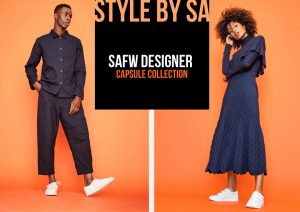
In conclusion, even social brands should start with the WHAT, and create a brilliant product with emotional appeal, that people want to buy and recommend on its own merits. Baking in a social cause then creates additional distinctiveness to make the brand even more appealing. In the words of Harry Specter’s: ‘Enjoy our product. Love the cause.’
To learn more about Harry Specter’s and order some chocolates, click here.
To learn more about how you can help St Christopher’s create brighter futures for young people, click here.
If you are a social enterprise interested in expert mentoring from Expert Impact, click here.


